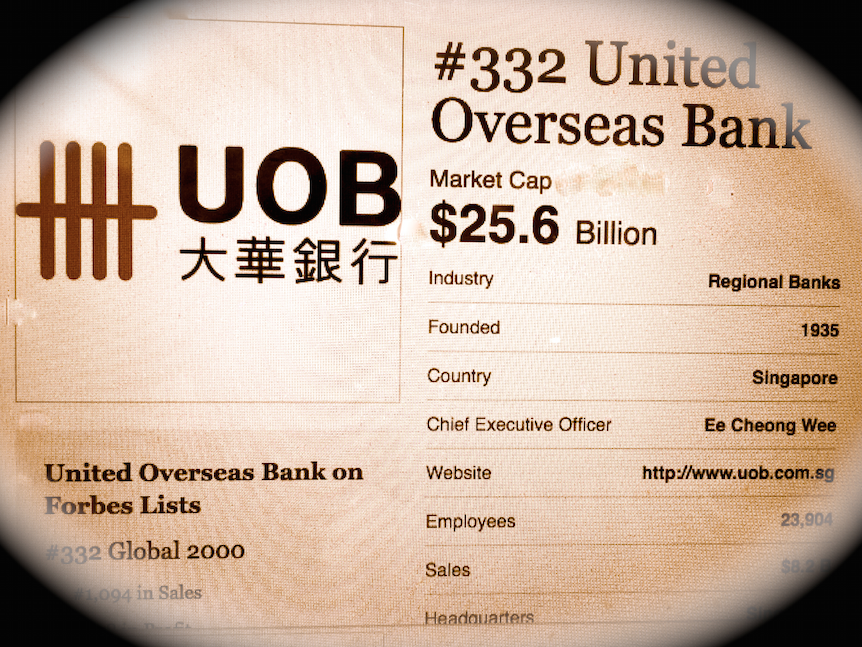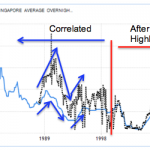Paul Ho (iCompareLoan.com) 02 June 2017.
UOB rolls out packages pegged to 15-month Fixed Deposit Pegged Rate (FDPR) on 1st June 2017. Previously UOB home loan packages were pegged to 36-month Fixed Deposit.
36-month Fixed Deposit rates is 0.65% (May 2017).
The switch to 15-month Fixed Deposit rate is 0.25% (May 2017) is seamless as UOB maintains the rates at the same.
Image Credits: Picture taken from Forbes website, artwork by iCompareLoan.com
Rates are for illustration only.
For example, before the switch, rates could be: –
- 36-month FDMR + 0.73% = 1.38%
After the switch, rates will be: –
- 15-month FDMR + 1.13% = 1.38%
The 15-month Fixed Deposit is based on the UOB’s 15-month SGD Fixed Deposit rate for amounts less than S$50,000.
The highest point was at 0.5% in Jan 2010. Lowest point was at 0.25% in Oct 2011. Data is only available from 2010 onwards.
Earlier in April 2017, DBS switched from the 18-month Fixed deposit peg to a 9-month Fixed deposit peg. DBS calls their Fixed Deposit Pegged Rate the “Fixed Home Rate”. This is not to be confused with Fixed Rate. A Fixed Rate is fixed, while a “Fixed Home Rate” FHR is still a variable rate home loan.
Now that DBS and UOB have made the move to peg to a lower tenure Fixed Deposit rate, it is very likely OCBC, Standard Chartered and Maybank will follow suit.
Why are Banks pegging home loan to lower Tenure Fixed Deposit
Table of Contents
In terms of spread, the banks are making more.
A 15-month FDMR + 1.13% = 1.38% means that UOB is making a 1.13% spread.
A 9-month FHR + 1.13% = 1.38% means that DBS is making a 1.13% spread.
Readers can get familiarise with the basics by reading the history of FHR-9 and FDMR.
Higher Spread margin
Banks may want a higher spread.
If a bank attracts more depositors into 9-month Fixed Deposits (DBS) and 15-month Fixed Deposits at 0.25% interest rate and sells bank loans at 1.38%, they will make more money as their spread is higher at 1.13%.
Tranche of Funds Used up
It is also possible that the tranche of funds previously 18-month Fixed Deposits and 36-month Fixed Deposits have been largely lent out through the DBS FHR-18 home loans and UOB FDMR-36 home loans.
The bank can of course tap other internal funding sources to lend out their money. When a bank references their home loan rates to FHR-18 or FDMR-36, it does not necessarily mean that they are tapping into those tranche of funds for lending out. They can simply use these as a reference from which to structure their home loan packages.
For example a bank that has a lot of depositors may give you a Sibor + 0.8% home loan, but they do not need to borrow from the Singapore Interbank market to lend you.
If a bank’s depositors are paid 0.25% and Sibor is 0.8%, when a bank charges Sibor + 0.8%, it is not only making 0.8% spread, in fact it is making even more as its cost of borrowed funds is lower.
Matching their funding sources (Deposits) with the lending demand
If banks really peg their tranche of funds from these deposits and allocate accordingly, then they are trying to match the home loans to the deposit pool of funds available in these deposits. It is possible that the 18-month Fixed Deposits has been mostly lent out (for DBS) and the 36-month fixed deposits (for UOB) has been mostly lent out. Hence they are tapping into other deposit tenures for funds.
Shorter duration tenure of Fixed Deposits may be more liquid and have bigger tranche of funds. Hence it is possible both DBS and UOB wants to match the supply of funds (Depositors) and demand for funds (home loans) to the respective tranches of 9-month Fixed Deposit and 15-month Fixed Deposit so as to be able to aggressively issue more Home Loans.
If they tap their loans from a larger pool of funds, this saves the bank having to find other funding sources for lending out Home loans.
Possibility of Impending Change
It is also possible that rate change is more likely if the banks are able to borrow cheaply and use up the funds. If the banks need to increase the Fixed Deposit rates to attract more funds, the home borrowers may see an increase rate.
Currently there is insufficient data to suggest whether it will be more risky or less risky with a home loan pegged to a shorter Fixed Deposit Tenure such as the DBS FHR-9 or UOB FDMR-15.
If you are unsure, you can call a Mortgage broker for a discussion or do your own Singapore Property market research.







